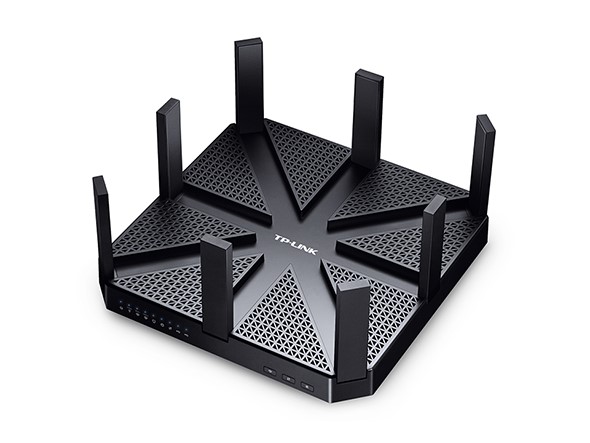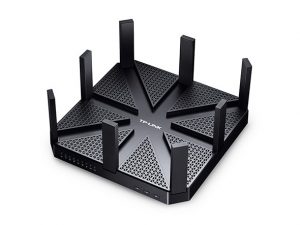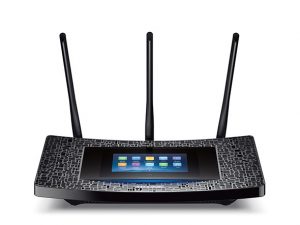WiGig Router:TP Link Releases next Step for WiFi

This month, the networking products manufacturer TP-Link released the Talon AD7200. The new Talon model is the first router to operate on the Institute of Electrical and Electronics Engineers (IEEE)’s 802.11ad, or WiGig, standard.The new standard transfers wireless data packets at theoretical speeds of up to 7 Gbps, far beyond the capacities of today’s commercial networks.

The engineers who built the new standard achieved exponentially faster speeds by utilizing the wireless channels in three radio frequency bands: 2.4 GHz, 5 GHz, and 60 GHz. Despite transmitting over a wider range of frequencies than any generation of Wi-Fi protocol before, WiGig technology is compatible with all current wireless networks and devices. Of course, higher frequency radio waves don’t have as long a range. WiGig, the first generation of Wi-Fi protocol to utilize the 60 GHz band, is especially beneficial for a high volume of devices in a tight network. As more and more devices are connected to the Internet of Things, WiGig will be able to accommodate, for example, an office with a laptop, a desktop, a storage device, a mouse, and a wireless speaker.
The Talon AD7200, for its part, supports throughput speeds of up to 7200 Mbps.Utilizing the 60 GHz band contributes significantly to this impressive number. TP-Link attributes 4600 Mbps of throughput speed, more than half the router’s potential, to the high frequency band. Its price, however, reflects its power. The router costs $350 from Newegg.com.

A Six-Fold Improvement in Raw Speed Over 802.11ac To put WiGig’s speeds in perspective, a tri-band WiGig transmission is as fast as an 8-band 802.11ac transmission. The IEEE approved 802.11ac, the previous standard, in 2014. Until this month, 802.11ac was the gold standard in Wi-Fi transmission technology. Today, despite the recent release of the Talon AD7200, it is still the most widely available Wi-Fi protocol.
Also known as Gigabit Wi-Fi, 802.11ac is the sixth generation of Wi-Fi standard. It transmits data at theoretical throughput speeds of 1.2 Gbps (hence the name). Unlike WiGig, which transmits over three frequency bands, 802.11ac transmits exclusively over the 5 GHz frequency band. Engineers designed 802.11ac to utilize the low traffic 5GHz band, although the popularity of the technology has, now, added traffic.
WIGig is even more impressive when compared to older generations of Wi-Fi protocols. The IEEE introduced 802.11n in 2004.

It exponentially increased the maximum download speed of Wi-Fi from 54 Mbps to over 600 Mbps by implementing multiple-input multiple-output (MIMO) technology for the first time. Today’s WiGig protocols are eleven times faster than the fastest 802.11n protocol. Throughput speed has, then, nearly doubled every year since 2004.
Today’s Devices Don’t Yet Utilize WiGig’s Colossal Potential
Interestingly, today’s wireless networks and devices don’t yet utilize the full potential of 802.11ac, let alone the colossal potential of WiGig. It’s easier for engineers to manufacture and distribute Wi-Fi hardware, like routers, than for telecoms to build entire wireless networks that utilize their full potential. As a result, commercial router technology is quite a ways ahead of network potential.





